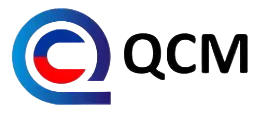In the rapidly evolving landscape of precast production, maximizing efficiency is paramount for maintaining competitiveness and ensuring high-quality results. As the global precast concrete market is projected to reach over $200 billion by 2027, industry players are increasingly turning to innovative solutions to enhance their manufacturing processes. One such advancement is the use of shuttering magnets for precast production, which streamline the assembly of molds and reduce labor costs by up to 30%, according to recent studies by the Precast/Prestressed Concrete Institute. These magnets not only provide exceptional holding power but also allow for quick adjustments and reconfigurations, significantly minimizing downtime. This essential checklist is designed to guide precast manufacturers in optimizing their use of shuttering magnets, thereby driving efficiency and productivity throughout the production cycle.

In the realm of precast production, the choice of shuttering magnets can significantly impact operational efficiency and productivity. Shuttering magnets are essential tools for securing formwork, allowing for precise and efficient casting of concrete elements. Studies indicate that the use of high-quality shuttering magnets can reduce assembly times by up to 30%, which translates into substantial cost savings for manufacturers. According to a report from the International Federation for Structural Concrete (fib), the adoption of innovative fastening systems, including shuttering magnets, has been shown to enhance overall production quality and reduce defect rates.
When selecting shuttering magnets, it's crucial to understand the available options in the market. There are various types of magnets, including permanent, electromagnets, and high-strength magnetic systems, each with distinct advantages depending on the application. For instance, a technical paper from the Precast Concrete Institute highlights that permanent shuttering magnets are favored for their reliability and ease of use in various weather conditions, which significantly minimizes downtime. Additionally, integrating advanced magnetic technologies can lead to a decrease in labor costs and an increase in safety on site, as fewer manual handling operations are required.
Understanding these options allows precasters to make informed choices that align with their production goals and enhance overall efficiency.
When it comes to precast production, the choice between traditional and alternative shuttering solutions significantly impacts efficiency and cost-effectiveness. Traditional shuttering methods often involve cumbersome lumber or steel frames, requiring lengthy setup and teardown processes. These methods can be labor-intensive and may lead to inconsistencies in the final product due to potential misalignment or warping. Additionally, the reliance on manual labor can introduce variability, slowing down production rates and increasing the risk of errors.

In contrast, alternative shuttering solutions, particularly shuttering magnets, have revolutionized the precast industry. These innovative magnets provide a fast and secure way to hold formwork in place, significantly reducing assembly time. They are adjustable and reusable, offering enhanced flexibility for different designs and sizes of precast elements. Furthermore, the precision of magnetic systems helps to ensure that forms are tightly sealed, resulting in minimal leakage and superior finish quality. With these advanced solutions, manufacturers can boost their productivity while minimizing waste and labor costs, ultimately leading to a more streamlined production process.
When it comes to precast production, enhancing efficiency is a top priority. While shuttering magnets are essential tools, exploring alternatives can elevate production capabilities even further. Alternatives such as adjustable formwork systems and polymer casting tools can offer significant advantages. These solutions often allow for quicker adjustments on the assembly line, reducing downtime and ensuring that projects stay on schedule.
Moreover, the implementation of advanced technologies, such as automated handling systems, can complement traditional tools effectively. Automated systems not only minimize manual labor but also improve precision in placing molds and components. This technological integration can lead to a smoother workflow, resulting in higher output rates and better-quality precast products. Adopting these alternatives enables manufacturers to remain competitive in a rapidly evolving industry while maximizing overall operational efficiency.
When selecting alternative shuttering magnets for precast production, several key features should be prioritized to ensure maximum efficiency. First and foremost, the holding force of the magnets is crucial. Opt for models that offer higher magnetic strength to secure forms tightly and prevent any movement during concrete pouring. This stability minimizes the risk of defects in the finished product and ensures that each piece is consistent and reliable.
Another important feature to consider is the ease of installation and adjustment. Look for magnets that come with a user-friendly design, allowing quick repositioning on site without the need for additional tools. This flexibility can significantly speed up the production process, as crews can adapt the shuttering setup to accommodate various molds and shapes efficiently. Additionally, consider magnets with a robust build quality to withstand the rigors of precast environments, ensuring they remain functional over time despite frequent use and exposure to harsh conditions.

In the world of precast production, shuttering magnets have become essential tools for enhancing workflow and efficiency. However, it’s the innovative approaches adopted by industry leaders that truly showcase the potential of these magnets. Take, for instance, a notable project where a construction firm integrated shuttering magnets with augmented reality (AR) technology. By employing AR for precise placement, workers were able to visualize mold configurations in real-time, significantly reducing errors and speeding up the casting process. This integration not only maximized the use of shuttering magnets but also simplified complex tasks, enhancing overall productivity.
Another compelling example comes from a manufacturer that explored alternative fastening solutions alongside traditional shuttering magnets. By introducing flexible magnetic sheets, they could easily adjust mold shapes without the need for extensive reconfiguration. This approach allowed for quicker turnaround times on varied designs, demonstrating how combining methods can lead to more dynamic and adaptable production lines. In both cases, it’s clear that embracing alternative strategies with shuttering magnets not only improves efficiency but also fosters a culture of innovation within the precast industry.
This chart illustrates the impact of various approaches to using shuttering magnets in precast production, highlighting efficiency improvements in production time (in hours) and reduction in labor costs (in percentage).






